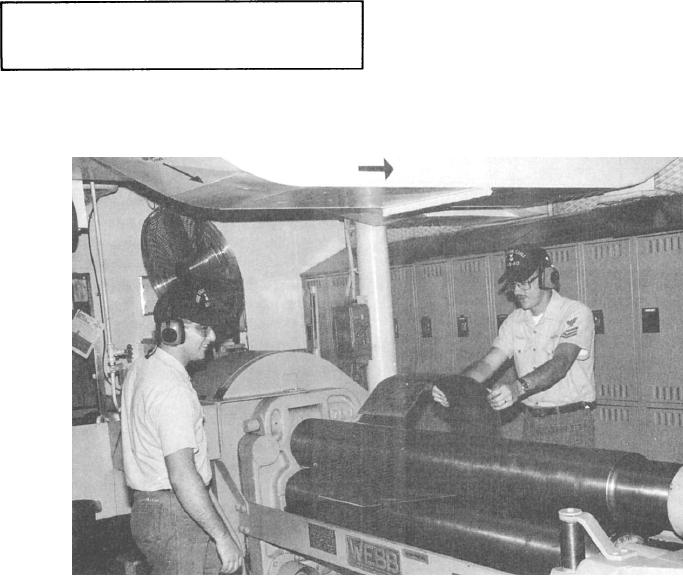
FORMING MACHINERY
gases are used for the plasma gas in cutting aluminum,
and nitrogen(N) is used for other metals. The shielding
This section will take a look at machinery
gas used is carbon dioxide (CO2). Table 13-4 shows the
associated with forming metal plate and shapes, such as
gas mixtures for automatic and manual cutting process.
the sliproll forming machine, the brake press, and the
PLASMA ARC CUTTING PROCESS.--The
Hossfeld Bender.
plasma arc cutting process employs extremely high
temperatures, high-velocity ions, and a constricted arc
Sliproll Forming Machine
between a tungsten electrode and the piece to be cut.
This concentrated and columnated energy is produced
Sheet metal can be formed into curves over pipe or
by the electrode heating the plasma gas in the torch body
a mandrel, but steel plate requires machinery capable of
to produce high-temperature ionized gas. This ionized
providing considerably more pressure in the forming
gas is forced out of the torch through the ceramic cup,
process. You have already been introduced to the
which concentrates and colmunates the energy. As the
sliproll forming machine in the chapter 12. The
ionized gas strikes the plate, the metal is melted and the
powered sliproll machine (fig. 13-38) used in the
jet-like action of the arc removes the molten metal
shipfitter shop operates on the same principle as the
mechanically. The inert gas atmosphere prevents
hand-powered sliproll used in the sheet metal shop. The
oxidation of the kerf wall.
powered sliproll machines found in the shipfitter shop
are capable of rolling plate up to l/2 inch in thickness.
Table 13-4.--Gas Mixtures for Plasma Arc Cutting Machines
Since steel plate is stiffer than sheet metal, you must
take greater care when feeding the plate into the
(Aluminum)
40 psi
Plasma Gas AR/H2
machine to ensure accurate rolling of the plate. Figure
Plasma Gas N2
(All others)
20 - 40 psi
13-39 shows some of the common problems associated
40 psi
Secondary Gas CO2
with rolling plate.
Figure 13-38.--Sliproll forming machine.
13-32

